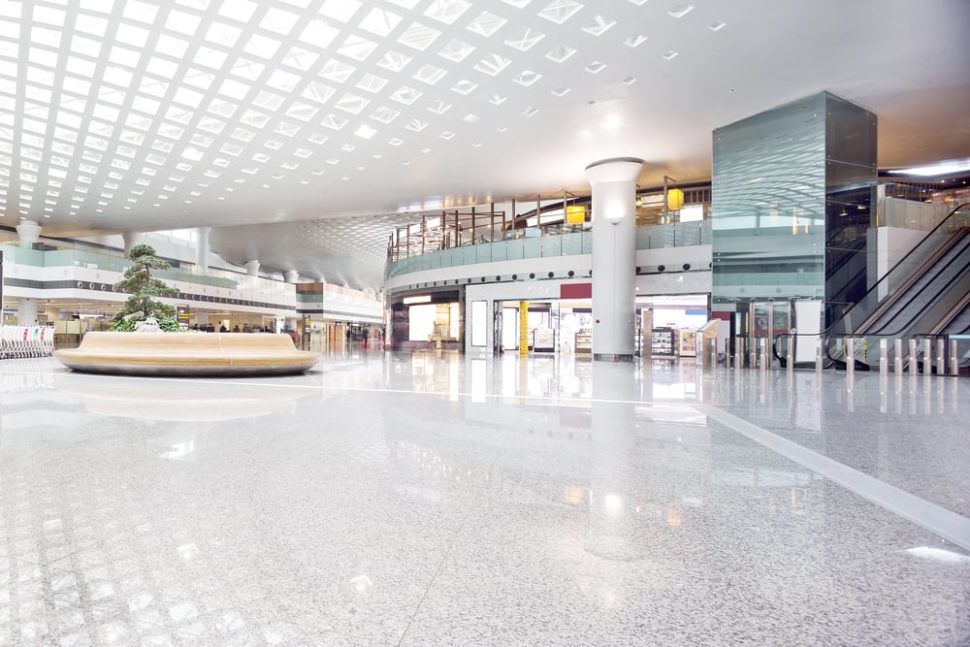Shopping malls have a significant impact on the U.S. economy, with more than 1 in 6 Americans having a job in the retail real estate industry (about 35 million jobs) and $3.9 trillion in GDP.
However, the digital boom, e-commerce, and the change in consumers’ habits are crippling these once buzzing complexes of physical shops.
In desperate need of retailers and shoppers, American malls are dying out at rising rates. Unless they thoroughly overhaul their operating system, they’re set for a pretty grim future.
Shopping Malls: the End of an Era
The first-ever mall in the world to open its doors was The Southdale Center (Edina, Minnesota) in 1956.
It was an Austrian architect named Victor Gruen (1904-1980), who immigrated to the U.S. in 1938, that came up with the design of the Southdale Center and the concept of indoor shopping centers itself.
The vision of Gruen, who fled the Nazis, was that concentrated shopping stores would help suburban communities to participate in and enjoy the modern American way of life.
Beyond their pure economic aspect, malls were seen as a social gathering place that provided an escape from the mundane routine of daily life.
Malls were the go-to place for people who wanted to take some respite from the stress of both work and home, to shop, to eat, and to interact all in one place.
When the Southdale mall opened, its atrium (the Garden Court) was the largest indoor public area in the U.S.
In the coming years, malls would pop up everywhere across all the states, driven by tax incentives and demand.
Gruen eventually returned to his hometown of Vienna. In his later years, he dissociated himself from the development of the mall industry that he qualified as a “bastardization” of his concept.
Yet, Gruen’s idea left a lasting effect as malls became a distinctive leitmotif in the American urban landscape and an icon of the spirit of economic prosperity and the consumerist culture.
Shopping Alone Won’t Drive Dense Foot Traffic Anymore
While the Southdale Center Mall is still open, hundreds of malls have closed, and many others are awaiting their demise.
The world has drastically changed over the years, while malls remain pretty much the same.
Consumers’ tastes and buying habits have evolved with the digital revolution. Now, it is easier to browse products and buy them online.
The internet era consumer is more informed, therefore more demanding, and seeks immediacy and convenience.
The boom of e-commerce has had a significant impact on sales of brick-and-mortar stores, causing major brands like Sears and Macy’s to close, leaving widening gaps in malls.
Six thousand four hundred stores shut their doors in 2017, with 3,600 more are set to follow suit in 2018, and the list of closed malls is growing longer each year.
There are currently around 1,200 malls in the U.S, but many won’t see the end of this decade.
According to a report by Crédit Suisse (via Fortune), one in four shopping malls could close by 2022.
The crisis has been hitting shopping malls since the onset of the current decade. It’s so severe that it’s even earned itself a page on Wikipedia called Dead Mall.
Deserted by shoppers and then department store brands, American shopping malls must reinvent themselves if they want to secure their future.
To survive, malls need to go beyond the now obsolete “one-stop shopping hall” concept and repurpose themselves around the “social gathering place” spirit.
Malls can still cash in on that “one-stop” concept but around non-retail physical stores, like fitness centers, beauty salons, dry cleaners, and other businesses that are convenient for some people to find in one place.
Another way for malls to recapture some of their past glory is by offering unique experiences to visitors in a not too dissimilar way to amusement parks.
For example, a mall in Toronto (Canada) will be hosting the famous Cirque du Soleil that designed an entertainment show called Creactive, specifically for retail locations.



















If they are successful in reinventing themselves they (in some form) will stay…